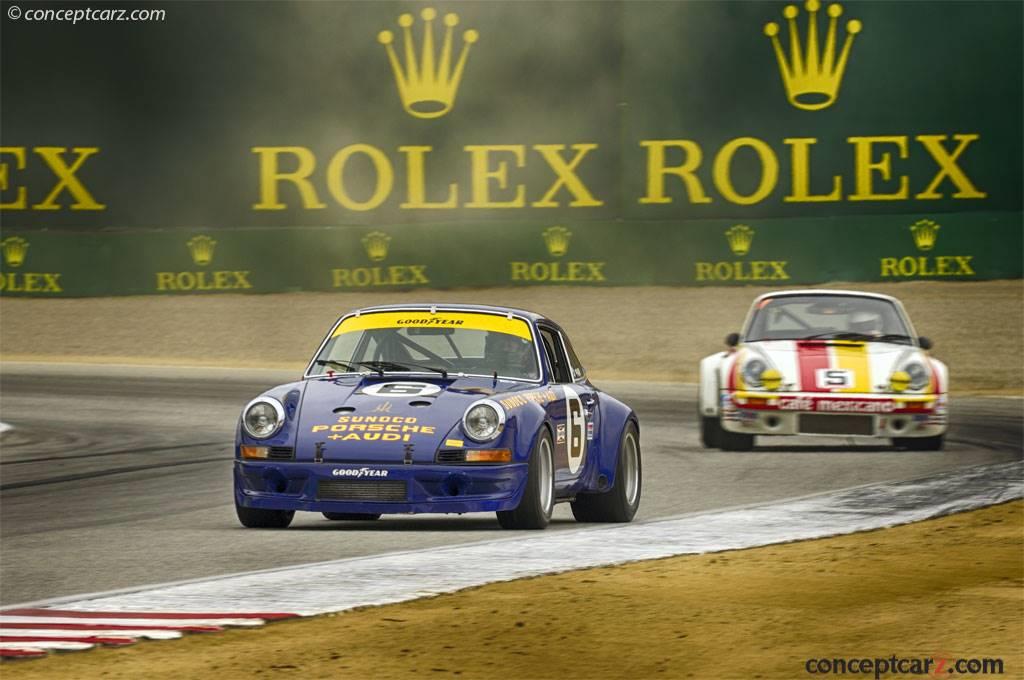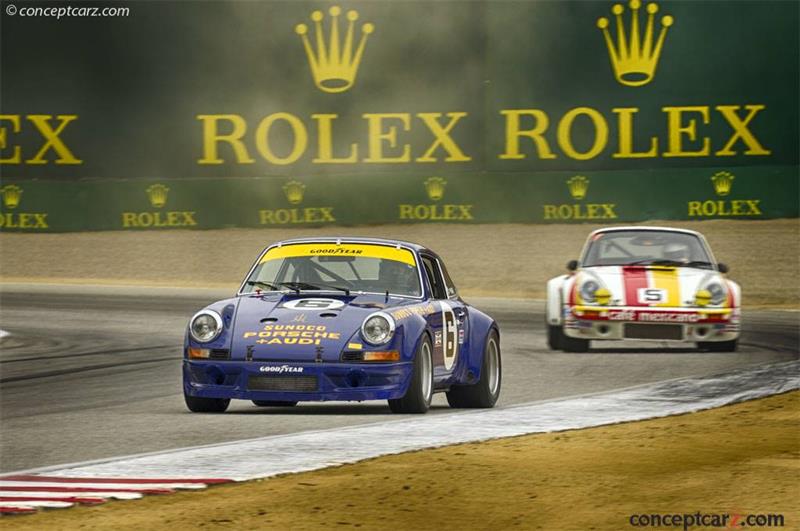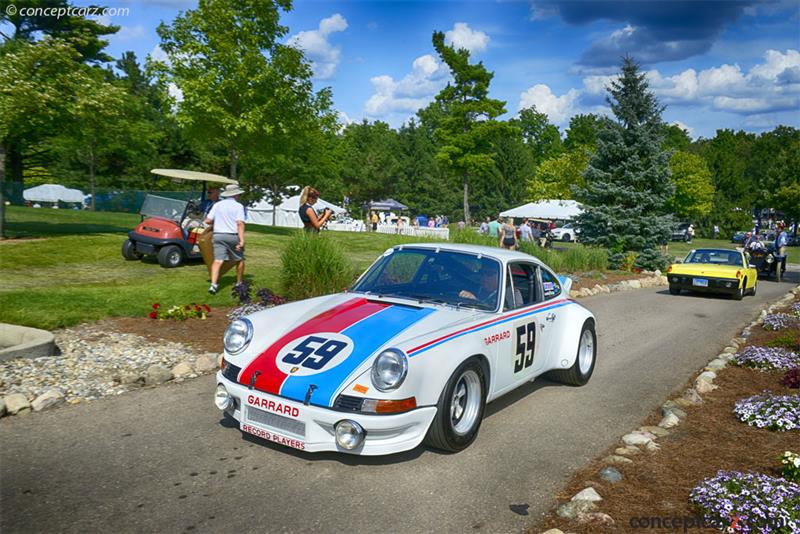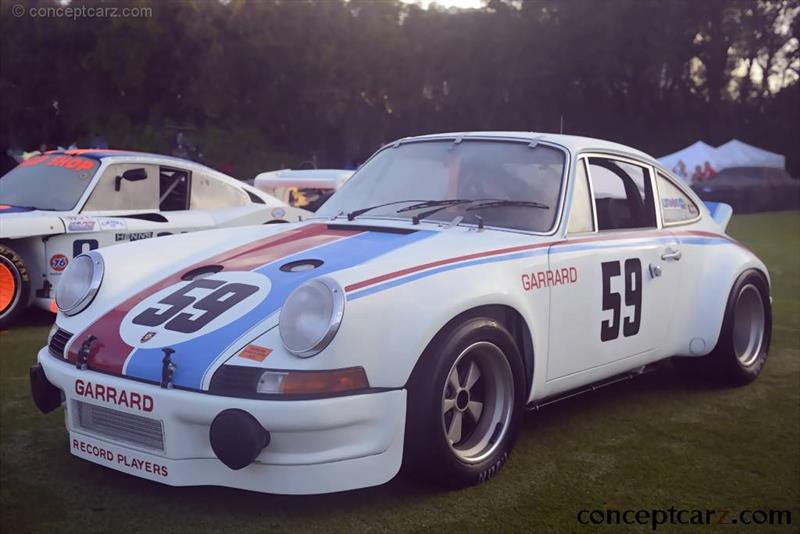1973 Porsche 911 RSR Navigation
The Porsche 917 had been a dominant force in the five-liter prototype category of the World Sportscar Championship until it was abolished by the FIA in late 1972. The German automaker decided to refocus their efforts on the FIA's Group 4 GT/Special Sports Car category, using the 911 S as a starting point. To qualify the 2.8-liter racing version for competition, a minimum of 500 units needed to be built. The 1973 911 S platform was lightened and modified, and the bodywork was widened with front and rear fender flares to accommodate larger wheels and tires. Lightweights and many Touring versions were fitted with thinner-gauge body panels and glass, and the suspension was upgraded. In the back was the signature fiberglass Bürzel, or 'ducktail' engine lid spoiler, which had been proven in wind-tunnel testing to reduce rear-end lift at higher speeds. Most Touring models had steel rear body panels, and the front and rear fascia's were made of fiberglass. The Porsche Carrera RS was introduced at the 1972 Paris Auto Show and all 500 Touring and Sport (Lightweight) cars were soon sold. Another series of 500 cars, followed by a third series, were made available and sold at substantially higher retail prices. Total production reached 1,525 examples of the RS, with 200 being the M471 Lightweights, 1,308 M472 Touring versions, and 17 RSHs (homologation models). An additional 55 examples were built as 2.8 RSR racing cars. In early 1973, a Porsche 2.8 RSR won the 24 Hours of Daytona outpacing a field of prototypes. It would become a dominant contender in European GT competition, including victories at LeMans, Daytona, and Sebring. Lennep and Muller drove a Martini Racing RSR Carrera to victory in the 1973 Targa Florio In comparison to the 2.7 RS, the 2.8 RSR had a central oil-cooler air intake, ultra-wide Fuchs wheels measuring 9-inches in the front and 11-inches at the rear, enclosed by large fender flares. Power was from an enlarged race engine with a 10.3:1 compression ratio, twin-plug ignition, larger valves, and lightened internal components. The Type 911/52 engine offered 300 horsepower at 8,000 RPM and was backed by a five-speed transaxle, a limited-slip differential, and an external oil cooler. The revised suspension assembly and braking system were based on the 917 components. 
CoupeThe modifications and final assembly were performed inside Work I, Porsche's racing shop. Every 2.8 RSR sold to customers was delivered in race-ready trim, complete with a fire suppression system, 110-liter fuel tank, battery main switch, safety harness, and roll bar. The completed package sold for DM 25,000, a substantial premium over the standard road-going 2.7 RS. Most examples were sold to private racing teams. Among the accolades of the 2.8 RSR were victories at the 24 Hours of Daytona, 12 Hours of Sebring, Targa Florio, and six of nine rounds in the 1973 European GT Championship.
by Daniel Vaughan | Feb 2020
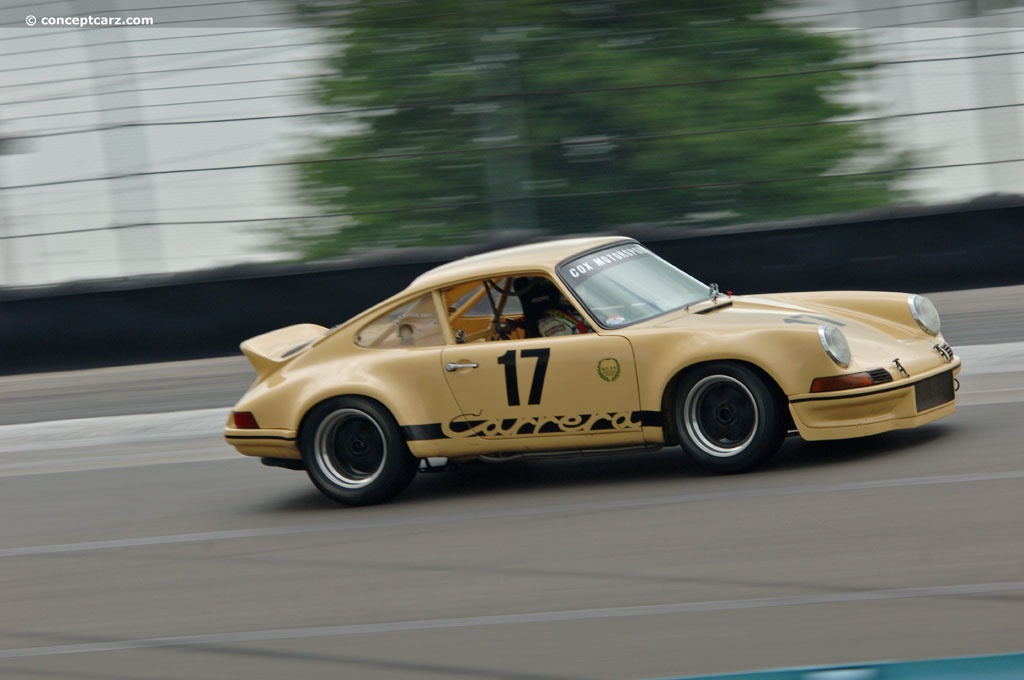
Coupe
by Daniel Vaughan | Feb 2020
Related Reading : Porsche 911 History
The legendary Porsche 911 is the longest production run sports car of all time. It was conceived as a successor for the highly successful Porsche 356 and from the start had high aspirations for success. Ferry Porsches son, Ferdinand Alexander Porsche, designed the 911. When it went into production it was labeled the 901 but Peugeot had claims to the name, so to avoid infringing on their naming scheme,....
Continue Reading >>
Continue Reading >>
Related Reading : Porsche 911 History
Who could predict that the 911 would be Porsches saving grace and surpass the 356 in sales, longevity Quickly establishing itself as an icon of 60s cool, the iconic 911 only became more popular as the years went on. The flagship of the current lineup of Porsche, the 911 (pronounced Nine Eleven) or Neunelfer is a two-door grand tourer with a very distinctive design. The 911 is one of the oldest....
Continue Reading >>
Continue Reading >>
- 1973 Porsche 911 RSR Menu
- Article
- Image gallery
- Valuation
- Specifications
- Profiles
1973 Porsche 911 RSR Vehicle Profiles
Recent Vehicle Additions
Related Automotive News
Brumos Collection Unveils 'Brumos: An American Racing Icon'
Brumos An American Racing Icon
By Sean Cridland
A Look Inside The Three Volumes
Volume I The Brundage Era chronicles the historical events that led to the creation and development of one of the worlds most legendary teamsWith a foreword...

Competition at the Amelia Island Concours
Competition has always been a part of the Amelia Island Concours dElegance. The core group of classes includes four Race Car groups (Prewar, 1946-57, 1958-66, 1967-83). Additionally, there are four classes reserved for Sports Cars. For those seeking...

Porsche Honors Hurley Haywood On 70Th Birthday
Endurance racing legend born May 4, 1948
Atlanta, Georgia. Porsche congratulates one of its most decorated ambassadors, Hurley Haywood, on a shared anniversary The five-time Rolex 24 Hours of Daytona winner turns 70 today, just a month before...

HURLEY HAYWOOD HONORED WITH RRDC'S 2014 PHIL HILL AWARD
DAYTONA BEACH, Fla. (Jan. 24, 2014) - Hurley Haywood, winner of more endurance classics than any other driver in racing history, was honored by the Road Racing Drivers Club with the 2014 Phil Hill Award. RRDC president Bobby Rahal presented Haywood...
RRDC VOTES IN 37 NEW MEMBERS FOR 2013
HILLIARD, Ohio (Nov. 7, 2013) - Thirty-seven race-car drivers and motorsports professionals have been voted into the Road Racing Drivers Club in 2013. The group includes 13 Regular Members from the open-wheel and sports-car racing ranks, 20 Associate...
